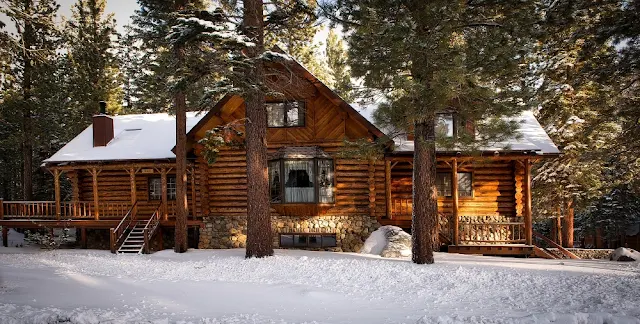If winter
sends your utility bills through the roof, you can make some simple changes to
your home to stay warm when the temperatures drop. From what you wear to your
sleeping space, you can make changes to your home and your habits that keep
your space comfortable without breaking the bank.
Simple
Solar
In the morning, open up those thermal drapes so your home can soak up the sunshine. Take care to make sure that your furnishings and carpet can tolerate the sunlight; the money you save warming up the house with simple solar won't pay for a new couch if yours is damaged by sunlight. However, most modern fabrics are sun-resistant. If you're concerned, toss a throw over the portion exposed to the sun.
In
addition to opening up the curtains, take a walk around your house. You may be
able to increase your winter heat and lower your summer cooling bills with the
addition of a deciduous tree in your front yard. Make sure that the grass in
your yard is well-established before planting a new tree; the water necessary
to settle new sod will kill a young tree.
Regional
Heat
If everyone in your house hangs out in front of the television in the evenings, consider letting the bedrooms cool down a bit overnight. Your body temperature naturally drops at night. It's the best way to quickly fall into REM sleep, which is good for your brain over the long term.
For those
with small children, encourage them to wear slippers and socks. A cold floor
leads to cold feet, which can make your body feel cold no matter the
temperature inside the house. Keeping your feet and ankles covered all winter
will make it easier to set the thermostat a bit lower. If your house is over a
crawl space, make sure the space between the floor joists is well insulated.
Check the venting of the crawlspace; while you need good venting to avoid
moisture build-up, too much can lead to a chronically cold floor.
Keep
the Cold Out
Make sure that doors and windows are sealed. Add caulking where it is necessary to keep out air drafts and consider adding spray foam to gaps that caulking won't cover. Make sure that all doors exposed to outside air have good quality seals and sweeps, and talk to a garage door repair specialist if you can see daylight under your garage door when it's closed.
Inside the
house, make sure your windows aren't letting in the cold. If you don't want to cover
your windows with plastic, consider adding thermal drapes to keep cold air out
at night. Add an air sock along each windowsill to keep drafts as low as
possible. For those with double-hung windows, carefully check the top of the
window to make sure that there is no gap. Top windows can slide slowly over
time, creating a draft.
Night
Vs. Day
A programmable thermostat is a good investment no matter the age of your home. Let the temperature in your space drop a bit at night. Program the thermostat to start warming up the house again thirty minutes before people naturally wake up. Again, sleep quality is enhanced by a cooler bedroom temperature. Invest in poly flannel sheets, or use flat fleece blankets as a top sheet to keep the heat close to your body, so you can stay warm when the air temp is a bit cooler.
While your house cools down, take care to protect the mechanics of your space. For example, make sure you insulate your hot water pipes to reduce the time you have to run water to get it hot enough for a bath or a shower. Closely review the condition of your dryer vents and other openings into or out of the house. These openings can lose a lot of heat and allow pests to enter.
Many
people find that they don't mind keeping their home a bit cooler. It does make
sleeping deeply easier, and it can make cooking and baking more enjoyable. No
matter your preference, do your best to insulate your home well and seal out
drafts and pests. You and your family will be safer and more comfortable with
these changes.










1 Comments
Bill Goldberg Harley Davidson Jacket is in hot trending these days hurry up avail this amazing opportunity now.
ReplyDelete